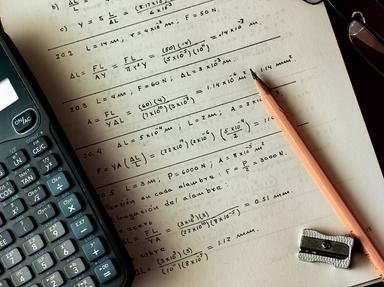Quiz Answer Key and Fun Facts
1. You stop for fuel and find that it costs $1.26 per litre. Your total fuel bill is $58.36. How many litres did you pump into your tank?
2. You are driving from Niagara Falls, Ontario to Mississauga, Ontario. When you start out, your GPS tells you that the distance to your destination is 107.6 km. When you hit the highway, you find that the speed limit is 100 kph. Approximately how long do you expect it will take you to get to Mississauga if you abide by the law and travel at the speed limit?
3. You are interested to know how efficient your car is when using fuel. You fill the tank and start out on your trip, then fill your tank again when you arrive. You travelled a total of 120 miles, and used 5.4 gallons on your trip. What is the mileage in miles per gallon (mpg) that your car obtained?
4. You make a pit stop and notice that the left front tire appears to be a bit low on air. You check the owner's manual and find that the tires should be inflated to 31 pounds per square inch (psi). You grab your handy tire pressure gauge and find that the tire pressure in that tire is only 26 psi. You hook up the tire to the air pump to inflate the tire. What number should you set the pump at to ensure that the tire is inflated correctly?
5. Your GPS machine breaks down while you are on the road, and you forgot your phone at home. This means that you have to stop and buy a map to find your way to your destination. The map costs $5.98, but there is a 13% sales tax in the jurisdiction you are in. How much, in total, do you end up paying for your map?
6. You decide that your trip is too long to manage in one day, so you break it up into three legs. On the first day, you travel 569.4 miles, on the second day, you travel 486.7 miles, and on the final day, you travel 532.1 miles. How many miles did you travel on this trip?
7. You are from the US and drive a car with a speedometer that indicates how fast you travel in miles per hour (mph). You cross the border into Canada where speed limit signs use kilometres per hour (kph). The border guard lets you know that you need to divide displayed speeds by 1.6 to get the approximate mph value. If the Canadian speed limit on the road is 80 kph, what speed should you follow on your mph speedometer so that you will travel at the proper speed.
8. You are from the US and travelling to Canada in the winter. They report on the radio that it is plus two degrees and you get quite worried. Plus two degrees Fahrenheit is quite cold and you didn't pack your down-filled parka. Suddenly, you remember that they use the metric system in Canada. You remember a trick someone once told you that said that in winter, if you double the Celsius value and add 32, you will get a rough estimate of the Fahrenheit value. When you do this, you stop worrying about being too cold. What do you estimate the Fahrenheit value of the temperature when you use this approach?
9. You know the trip is 450 kilometres (km) long, and your little one has to stop exactly 2/3 of the way for a break. When you head back out to the car, she asks "are we there yet?" The speed limit is 100 kph, so assuming good traffic conditions, what do you respond?
10. For your next road trip, you need to rent a car. The company charges $1.25 for each mile that you drive over their 500 mile limit. You travel a total of 612 miles. How much do you have to pay in mileage fees to the rental company when you return the vehicle?
Source: Author
Trivia_Fan54
This quiz was reviewed by FunTrivia editor
WesleyCrusher before going online.
Any errors found in FunTrivia content are routinely corrected through our feedback system.
